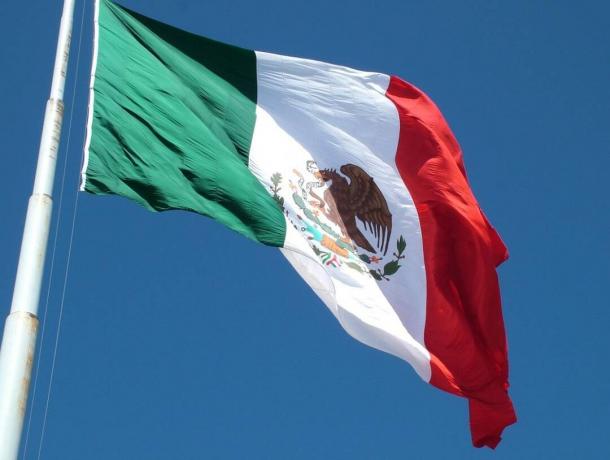The import substitution model in Mexico arises since the 1950s. Since World War II, the Mexican economy has had a checkered history, hit by internal and external shocks and plagued by inflation and macroeconomic instability.
Can be identified Five Major Phases of Economic Performance and Policy MakingFirst, the import substitution phase from the 1950s to the late 1970s. Second, the oil boom from 1976 to 1981. Third, the debt crisis and its aftermath from 1982 to 1987 during the presidency of Miguel de la Madrid Hurtado. Fourth, the period of macroeconomic reforms initiated by Carlos Salinas de Gortari from 1988 to 1994, and finally the period since 1994 when Ernesto Zedillo came to power (replaced by President Fox in 2000) and Mexico locked itself into the North American Free Trade Agreement (NAFTA).
Advertisements

In this article you will find:
Import substitution model in Mexico
- Early (1940-1982)
It is well known that import substitution policies implemented in virtually all of Latin America in the 1950s, including Mexico, were inspired by the ideas of Raúl Prebisch (1950), who was the first economist after the Second World War in seriously questioning the doctrine of mutual profitability of free trade for all countries participants.
Advertisements
In 1956, 17 percent of imports were subject to licensing. In 1974, more than 80 percent of imports were protected by licenses, and during the years of the debt crisis, 1982-83, all imports were subject to licensing (despite the fact that import substitution policy had been relaxed during the oil boom years of the late 1990s). 1970).
For most of the period, import controls operated at a fixed nominal exchange rate that devalued twice in the period: 25 percent in 1976 and 47 percent in 1977.
Advertisements
The World Bank in its categorization of countries according to trade regimes during the period 1963-85, classified Mexico as a "moderately inward-oriented" country. The import substitution industrialization policy officially ended with the debt crisis and the change of government in 1982.
However, the rapid growth in production in the mid-1970s was not "painless." The government was overextended, ran a fiscal deficit of 20 percent of GDP, and went into heavy debt abroad. In 1975, the trade deficit as a percentage of GDP rose to 2.7 percent, its highest level since 1960.
Advertisements
In 1982, the new government of José López Portillo introduced a drastic program of economic reform, which put formally end to the import substitution strategy carried out during the three decades previous.
- Living standards fell dramatically (1983-1988)
Trade balance surpluses were generated throughout the period from 1982 to 1988, but at enormous cost in terms of welfare.
Advertisements
Real wages fell by at least 30 percent and poverty and unemployment increased. GDP growth was negative in 1982, 1983, and 1986 and, on average, it was slightly negative for the entire period. Stabilization programs introduced during this period were frequently discontinued, requiring review and modification.
The 1983 Program was seriously affected by the sharp drop in oil prices between 1985 and 1987, and by the earthquake in Mexico City that caused serious disruption and imposed costs significant. In late 1987, Mexico was going through a serious fiscal crisis, partly as a result of the New York stock market crash and capital flight from Mexico, and partly as a result of high inflation rates (8% per month). The peso was already depreciating, but then it was formally devalued in November 1987.
Inflation was reduced, based on an austere fiscal policy, and public finances were improved through the privatization of public assets.
The new government of Carlos Salinas de Gortari was elected in 1988, which promised to promote trade and investment reforms. Emphasis was placed on reducing the dispersion of tariff rates with the aim of producing a broadly uniform effective system of protection.
- NAFTA (1989-1994)
In October 1989, a new framework agreement between Mexico and the United States to further facilitate trade and investment between the two countries; a precursor to the NAFTA agreement in 1994. The foreign direct investment laws were also amended in 1989, eliminating some of the restrictions on foreign investment, particularly in the capital goods and technology industries intensive.
After the trade reforms between 1985 and 1987, the most significant event was the negotiations in the early 1990s that led to the 1994 NAFTA agreement between Mexico, Canada and the United States. From the point of view of the Mexican government, the main function of NAFTA was to incorporate the trade regime recently liberalized (since 1985) in a comprehensive international treaty to block free market policies against future changes in government.
On a practical level, it marked the beginning of the removal of most of Mexico's remaining barriers to trade and investment. The goods were divided 13 into five categories and a tariff reduction program was agreed for each one.
- NAFTA and manufacturing 1995-2003
Manufacturing industry has played and continues to play a fundamental role in the Mexican economy, the manufacturing industry has acted as an engine of economic growth, exhibiting a strongly pro-cyclical evolution.
Mexico is fully integrated into world trade. NAFTA contributes to the adjustment process by allowing Mexico to reduce its account deficit current through increased exports rather than decreased imports from the USA USA Mexico becomes the first Latin American member of the Asia-Pacific Economic Cooperation Forum (APEC), as well as a founding member of the World Trade Organization (WTO).
For the year 1988 through 2003, the price that was constant for manufactured imports as opposed to exports had more than doubled. The trade deficit in the manufacturing sector has been widening, putting additional pressure on the overall trade balance.


